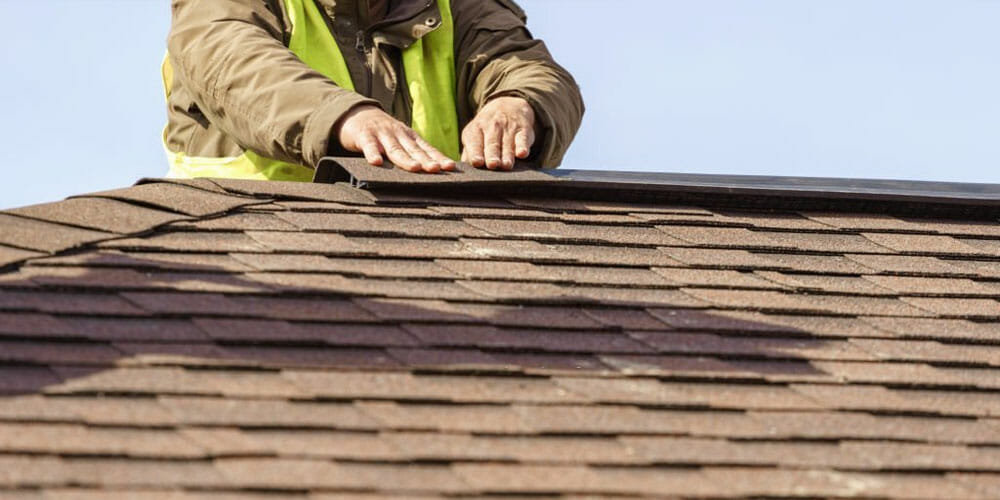You know it’s time to replace the roof and you’re looking at some of the final roofing details before making the final selection.
Today, the architectural shingle class is running away with the market. Warranties range up to 40 years and even lifetime. Color is no longer the only choice to make. The many textures, forms and designs of architectural shingles in the marketplace can result in a major aesthetic upgrade for your home. Ask us to show you a good, better, and best selection or products. Shingles are not just for keeping the rain out anymore. Warranties range from 20 years to lifetime. The length of the warranty is an indicator or performance and value. The upfront coverage in the first few years following application is also very meaningful. This is the time when, according to contractors, problems caused by defects are most likely to occur. As a result you should look for manufacturers’ warranties that cover materials and labor in the first three to five years after applications on any grade of roofing shingle.
Manufacturer’s warranties
Carefully review the manufacturer’s warranty stipulations about proration and transferability. Proration is the reduction of the manufacturer’s contribution to the homeowner for repairing or replacing defective shingles during the warranty period. Select products carrying a warranty that does not prorate during the first three to five years after installation. Also, make sure the warranty prorates the current market cost of the replacement shingles (as opposed to the original cost of the defective shingles). Examine the manufacturer’s stipulations on ventilation and warranty validation. Shingle roof system failure as the result of inadequate ventilation may cause the shingle warranty to become invalid. Note the contractor’s guarantee of performance.
Roofing Contractor’s guarantees
Contractor’s guarantees are usually for one to five years on the average. Remember that the length of the contractor’s guarantee is less important than his ability or intent to stand behind his workmanship and to service a valid complaint in a reasonable amount of time. This intent must be determined from referrals and references and his general reputation in the local business community. The Underwriter Laboratories Inc. (UL) ratings signify that the shingles were manufactured to pass a certain set of standards to qualify as fire resistant. Fiber glass shingles carry a UL Class A fire resistance rating. Some local building codes may have ordinances specifying a certain UL Class for your residential area. Your contractor or local building codes officer can tell you what the requirements are for your particular area. While hiring a roofing contractor you should, nevertheless, familiarize yourself with certain aspects of the reroofing process. The fact is, there are various conditions about your roof that may limit your product choices or affect the cost of your roofing job. Consequently, you should learn about these certain circumstances if and when your contractor approaches you about them.
Here is a list of questions and answers that are relevant to the roofing process.
Do I need to obtain a permit to install a new roof on my home?
Some local ordinances require premits be obtained prior to the start of roofing work in both new and some reroofing jobs, depending on the locale. If a permit is required, discuss with your contractor who will obtain it and how it will be obtained. If your contractor agrees to obtain the permit, make sure your contractor states this clearly. Your roofing contractor should know if a permit is required in your area for reroofing jobs. You can double-check with your local building codes officer to be sure.
What about the roof slope?
Does the slope of the roof limit the choice of shingle that can be used? The slope of the roof is measured by the rise versus the run, or the number of inches vertically by the number of feet horizontally. Some roof slopes can limit the choice of shingles that can be used. Your roofing contractor should consult the application instructions found on each shingle bundle wrapper or installation instructions supplied separately for further details. Is it always necessary to tear off existing shingles before reroofing?
Who is responsible for the disposal of the old shingles?
There are two options available for reroofing installations. One would be to tear off the roof before applying the new one (tear off). The second would be to lay new shingles over the existing roof (lay over). While the second choice is the less expensive of the two options, it is not necessarily always the best choice. There are always advantages of tearing off the old roof before installing a new one. For example, if there are any defects in the roof deck, they will be revealed when the roof is torn off. These defects should be repaired before applying the new roof. If condensation problems exist in the attic, they too will be revealed when the roof is torn off. Properly designed attic ventilation can be installed in order to help eliminate such problems. When the old roof is torn off, waterproofing shingle underlayment can be installed before applying the new roof. This will help protect against leaks created by cyclical ice damage and wind-driven rain. Tearing off old roof and starting with a clean deck before reroofing may result in a smoother finished roof system. Although there is added cost to these advantages, each lessens the likelihood that the validity of the manufacturer’s shingle warranty will be impaired. If the old roof is torn off, your contractor should be responsible for the cleanup and disposal of the shingles, but make sure your contractor states this clearly. If you do plan to reroof over existing shingles, first check if your local building codes limit the number of roof layers that can be applied to the residence in your area. Your contractor should know pertinent code requirements.
How can you determine if the roof is properly ventilated?
When contractors say a roof should breathe, they are usually referring to the ventilation system beneath the roof deck. Most shingle warranties require a lot of ventilation- as much as one square foot of net free ventilation area for each 150 square foot of floor space to be vented or one square foot per 300 square feet when both ridge and soffit ventilators are used. An effective ventilation system will help reduce attic heat buildup, reduce attic moisture and condensation, prevent weather infiltration, and prevent ice dam build-up. Even if you feel you have had satisfactory ventilation performance with your old roof for as long as 20 years, it might be necessary to add ventilation with your new roof to meet the standards mentioned previously.
What function does shingle underlayment serve?
As underlayment, commonly known as roofing felt, will protect the roof deck from moisture prior toe shingle application and provide a degree of backup protection in the even water gets under roofing shingles. Some local building codes and UL standards require that a shingle underlayment be installed. Ask your contractor if this is the case in your area. Also, some manufacturers offer a special underlayment product which prevents leaks caused by water backup from ice dams- a common condition in many winter snow areas. Protections against ice dams can be obtained by using waterproofing shingle underlayment at the eaves and lower edges of the roof, in addition to installing adequate ventilation and proper insulation in the attic floor. Ask us about these specialized underlayments. We hope that this was helpful and has proved you with some insightful information regarding the reroofing process.
Integrity Roofing and Painting, LLC is one of only a few Denver Roofers certified as a Select Master Shingle Roofing company. Contact us for your roof replacement in Denver, Colorado.

